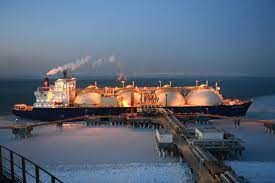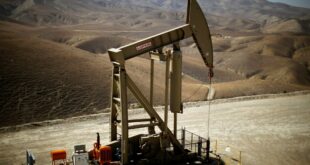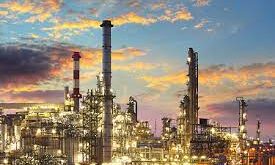Soaring U.S. LNG exports have made natural gas a global commodity and the United States vulnerable to global price volatility. As American exports of liquefied natural gas are set to grow further this decade, the once-isolated U.S. natural gas prices will become increasingly linked to the pace of LNG exports and global supply and demand.
As Europe has been scrambling to replace Russian pipeline gas supply since Russia’s invasion of Ukraine, growing volumes of U.S. LNG are making their way to Europe instead of Asia. Exporters are also signing long-term deals to ship the gas from existing and future LNG export facilities to international markets to underpin final investment decisions for the new plants.
With more domestically produced natural gas feeding export facilities and helping Europe stock up on LNG, U.S. natural gas prices rose last year, and gas home heating bills were high amid higher wholesale and retail gas prices, which utilities passed on to customers.
This year, as the shocks of the energy crisis elsewhere subsided and gas prices fell, U.S. wholesale natural gas prices have fallen back to the levels from before the Russian invasion of Ukraine.
However, “many residential utilities are still, to this day, charging their customers near-record fees for gas,” Clark Williams-Derry, energy finance analyst at the Institute for Energy Economics and Financial Analysis (IEEFA), wrote this week.
Residential gas prices have started to ease but remain well above their average for the previous decade. Utilities across America have said in the past year that the soaring U.S. LNG exports have raised domestic gas prices.
“With U.S. LNG exports slated to almost double over the next 5 years, U.S. ratepayers should brace themselves for more volatility,” Williams-Derry says, and offers a solution, according to IEEFA:
“Curtail new gas export projects. We’ve already dug ourselves into a hole. The smartest thing to do now is to stop digging.”
But the U.S. is set for LNG capacity expansion this decade, and its exports will further increase next year as two export terminals come online—Golden Pass in Texas and Plaquemines in Louisiana.
The U.S. already exported more LNG in the first half of 2023 than any other country, the EIA said earlier this year. With average LNG exports of 11.6 billion cubic feet per day (Bcf/d) during this period, or 4% more than in the first half of 2022, the United States was the world’s top LNG exporter ahead of Australia and Qatar.
In October, U.S. LNG exports hit the second-highest monthly level on record, just below the record from April 2023, per estimates from data provider LSEG cited by Reuters.
Still, the EIA expects lower average natural gas bills for U.S. consumers that heat their homes primarily with natural gas this winter heating season compared with last winter, when residential retail natural gas prices were higher than they had been in the previous ten winters.
Natural gas is the primary heating fuel for 46% of U.S. homes, according to the Census Bureau’s 2022 American Community Survey. The retail price of natural gas and the amount of natural gas consumed determine how much consumers will pay.
The wholesale U.S. natural gas spot price at the national benchmark Henry Hub started last winter heating season averaging $5.66 per thousand cubic feet (Mcf). This November, the EIA expected the Henry Hub price to be 45% lower than last year, averaging $3.12/Mcf.
“The lower wholesale natural gas prices this year have led us to expect a 21% ($3.16/Mcf) decline in the U.S. average residential retail price for the 2023–24 winter,” the EIA said.
Customers should still expect relatively high prices because lower wholesale prices do not immediately translate into lower retail prices for residential consumers. Changes in retail natural gas prices lag changes in wholesale natural gas prices, largely due to the nature of utility regulation, the EIA says.
With LNG a global commodity, U.S. residential consumers are not as isolated from global price swings and supply and demand as they were just a few years ago.

 Iran Energy News Oil, Gas, Petrochemical and Energy Field Specialized Channel
Iran Energy News Oil, Gas, Petrochemical and Energy Field Specialized Channel



